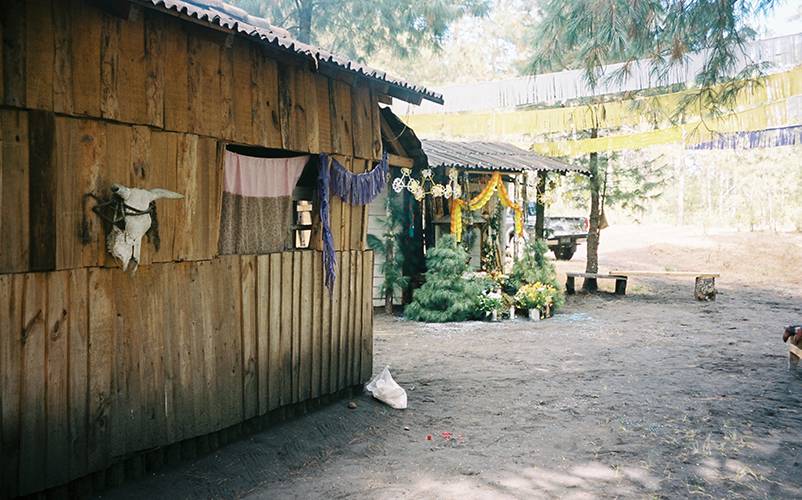 Research
Research

Subject
An Architect in the Footsteps of Ethnographer Carl Lumholtz
First and second supervisors
- Professor Murray Fraser (The Bartlett School of Architecture)
- Professor Susanne Kuechler (Department of Anthropology, UCL)
Abstract
Under the Parícutin volcano in Mexico, a local Purépecha community rediscovers its village destroyed by the lava through the work of Norwegian ethnographer Carl Lumholtz. His books show pictures of the ancestral trojes – typical huts – and describe the everyday life of the village, a hundred years ago. Starting in 1890 from cliff dwelling studies in Chihuahua, Lumholtz’s research lasted five years and studied multiple cultures and architectures such as sacred caves, temporary altars in the desert, dancing squares, shaman lodges in the woods, and the aforementioned trojes. Later, Lumholtz explored Borneo, where his architectural discoveries are similar in variety: communal longhouses, sacred ephemeral huts, monumental fisher structures, and funeral monuments in the jungle.
As this Purépecha community, what can we discover from Lumholtz’ archives, photographs, and writings? Both the natural and cultural contexts have changed today. Multiple forms of imperialisms have destroyed some of these cultures as the Parícutin has burned its surrounding villages. Furthermore, ethnography practices have evolved today and have to be questioned. This research by design proposes to rediscover Lumhotlz’s archives and sites from an architect’s point of view.
Traveling across Mexico and Borneo, the project will use ethnographer’s technics to study various architectural forms; vice versa, this project by design will introduce architecture technics to document ethnographic fieldwork. The objective is to associate two practices, in order to complete each other. On one hand, the ethnographer methodology includes interviews, notes, and photography; on the other hand, architecture techniques combine drawings, models, and construction studies.
This project is inspired by a post-modern ethnographic approach, including the point of the local as the point of view of the researcher. This experimentation will question the act of building in a given social and natural environment, and will propose a participative and perspectivist ethnography combining the knowledge of indigenous people, academics, artists and architects.
Biography
Olivier Bellflamme is a Belgian architect based in London. He graduated from La Cambre Horta in Brussels and the Architectural Association in London and is now the founder and curator of the art project Lucrèce. Today, the art residency Lucrèce is collaborating with many internationally renowned artists, such as Viriya Chotpanyavisut, Alexis Gautier, Ištvan Išt Huzjan, Sophie Nys, and Rometti Costales, in art projects around the globe, including France, Mexico, Peru, Laos, Ethiopia and Norway. Currently, he is studying for his Architectural Design PhD research about architecture and ethnography, at The Bartlett and at UCL Department of Anthropology. As an architect, he has mainly built in Mexico where he also worked for Frida Escobedo.
Image: Purépecha altar for the Saint of the Miracles, Parícutin volcano, Mexico, 2018.
 Close
Close

